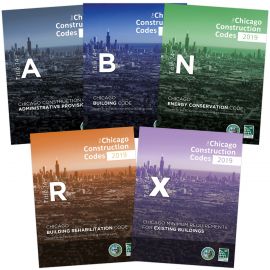
In a previous post, we went over the changes in fire alarm requirements in Chicago educational occupancies. Today we’ll discuss the changes for Group B and M occupancies in Chicago.
To start, the Chicago Building Code (CBC) business occupancy designation has changed from Class E to Group B and mercantile occupancies have changed from Class F to Group M, aligning with the 2018 International Building Code (IBC). As a point of reference, a Group B occupancy is distinct from a Group M occupancy, in that Group M occupancies sell things whereas Group B mostly sell services. Secondary educational occupancies are therefore Group B since you’re paying for the education yourself, not Group E (Educational) which require attendance. As a reminder, even though you’re paying for the service, Chicago daycare facilities are generally considered Group E-2 occupancies in order to provide additional safeguards for the occupants.
Fire alarm requirements for Group B and M occupancies are almost the same. The only difference is when the requirements kick in. Group B occupancies are required to have a manual fire alarm system if its total occupant load is 300, whereas Group M matches the IBC threshold of 500. Both groups also require a manual system if the occupant load above or below the lowest level of discharge is 100. However, if either occupancy has a sprinkler system throughout that notifies all occupants upon activation, manual stations are only required at exit points on the level of discharge. SPrinkler requiremnets for Group B only apply to Ambulatory Care adn telephone exchange facilities, while Group M requirements are on a square footage basis. If required to have spinklers, the system must be monitored by a fire alarm system that notifies occupants pon activation & transits a signal off site. None of the above addresses high rises, which have their own requirements regardless of occupancy type.
To summarize, per the CBC, Group B & M occupancies are not required to have fire alarm systems if their occupant loads do not meet threshhold levels. However, insurance and/or corporate policies may require them. If so, they should be installed per NFPA 72.
Staying up to speed and not over-designing a life safety system can be tricky given the different aspects an owner must address, so be sure to use a Honeywell Gamewell-FCI distributor that has the experience & knowledge to keep you out of expensive adds at the last minute. Affiliated Fire Systems has established relationships with over 70 engineering/design firms for a good reason. Contact us to ensure the life safety portion of your project goes smoothly
Gene Rowe, SET NICET IV, Fire Alarm Systems


Send us a Comment